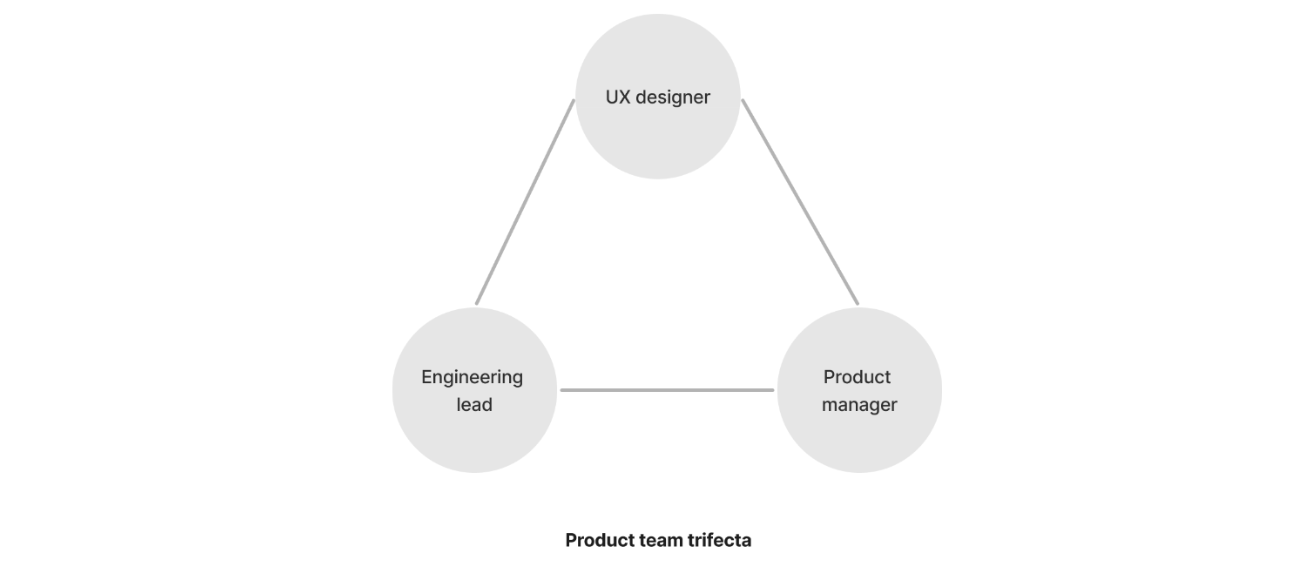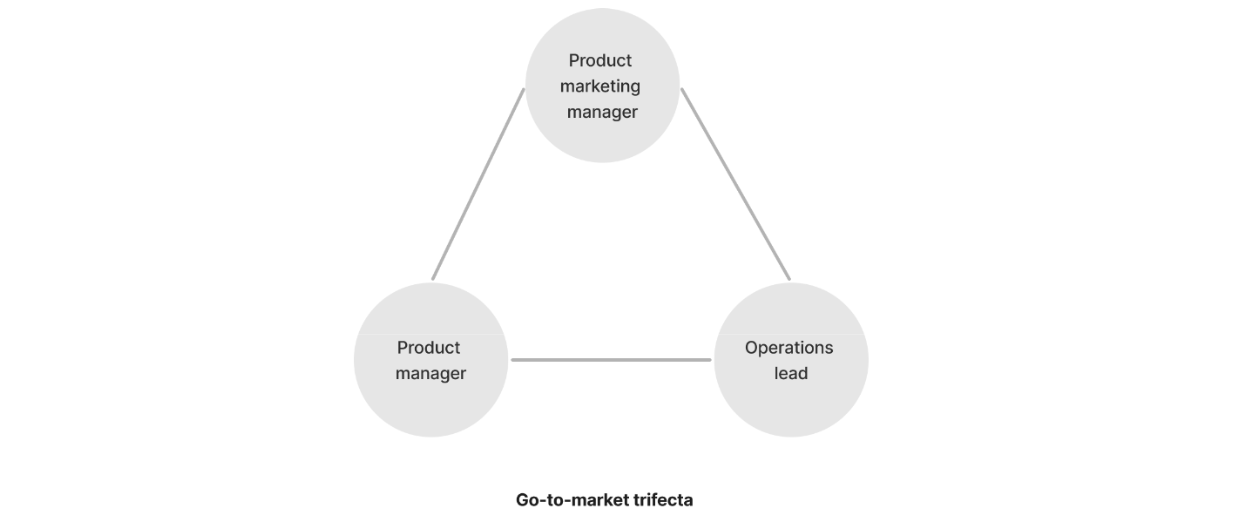You have 1 article left to read this month before you need to register a free LeadDev.com account.
Having accountability over different responsibilities is key to cross-functional work. Here’s how the trifecta team structure can help.
Working in a team that builds user-facing products can be a lot like spinning plates. Not only are you involved in making sure that you’re designing and building your software in the right way, you’ve also got to think about getting product-market fit, crafting a narrative that will entice both new and existing users to adopt it, and ensuring that there is proper documentation and customer support in place.
Without some clarity around everyone’s roles and responsibilities, everything can get overwhelming. So, who should be involved in which decisions and when?
At my company, Shopify, we’re proud to have small, autonomous teams that can bring whole products to market. We do this by designing our teams around the concept of trifectas, where we name three leads with clear accountability.
In this article, I’m going to walk you through a common team structure at Shopify that consists of a product trifecta and a go-to-market trifecta. I hope this will help you better design your own teams, and ensure there are clear responsibility boundaries within them.
What is a trifecta?
A trifecta is a group of three named leads that have clear accountability and the ability to get stuff done. This ensures every team has the skills and autonomy to bring whole products to market.
Shopify has grown significantly in size over the last few years, which means we must aggressively fight against complexity in order for teams to be able to move as fast as they could when we were much smaller. The trifecta is a way to empower a small group to move as fast as they would like to, without relying on top-down decision-making from higher up in the org chart.
Our trifectas work closely together to build and operate products at scale. They consist of the leads of three teams, working closely together every day to ensure that teams are aiming towards the right goals, assembling the right people to get the job done, and then achieving the goal together.
The product team trifecta
The trifecta that our engineering leads are involved in is called the product team trifecta. It consists of a product manager, an engineering lead, and a UX designer.

The product team trifecta is responsible for ensuring that we are building the right product for our customers. They collaborate closely to ensure that we are:
- Identifying and solving the right problem or opportunity, which is the responsibility of the product manager. This may mean building a new product, or it may mean iteratively improving one that already exists.
- Ensuring that the product is being built in the right way, which is the responsibility of the engineering lead. This covers everything from the design of the system and architectural components through to the quality of the code and tests.
- Ensuring that it is a great experience for our users, which is the responsibility of the UX designer. This spans from user research through to hi-fidelity designs that can be implemented.
These three disciplines may not always agree on the best way forward, due to the natural tension that arises from the different skill sets (think of the levers of scope, resources, and time). However, this tension ensures that decisions get made that are best for our users, and accelerates the time to market.
Some examples of the activities that the product team trifecta perform include milestone and roadmap planning, backlog refinement, estimation, running retrospectives, and being connectors for the team into the wider organization to identify and solve issues.
It’s worth mentioning that even though the product team trifecta performs duties that are often seen as staples of agile teams, we don’t prescribe any particular form of agile. We let our teams choose the best way that works for them, whether that’s scrum, kanban, or no process at all. What matters is that teams feel happy and productive, and get results.
The go-to-market trifecta
The team’s product manager also sits in another important trifecta: the go-to-market trifecta. This is where, in some organizations, engineers may see this work as ‘outside’ of the team, but we ensure that it is as close to the team as possible with regular touchpoints and collaboration.

The go-to-market trifecta is responsible for launching, growing, and operating the product. They collaborate closely to ensure that:
- There is a clear shipping timeline that is solving the correct problem or opportunity for customers, which is the responsibility of the product manager. This comes from collaboration with the product team trifecta.
- The product is adopted by new and existing customers that would benefit from it, which is the responsibility of the product marketing manager. This involves building a narrative and marketing campaign, deciding on cohorts for rollout, and ensuring that messaging is delivered.
- The product is supported and documented at scale, with financial and legal requirements covered, which is the responsibility of the operations lead. This may involve training support staff and securing a budget for infrastructure spend.
Some example activities that the go-to-market trifecta may be involved in include creating marketing campaigns, making go or no-go decisions for rollout, and reporting on usage metrics.
Putting it all together: The multifecta
Since the product manager is the link between the two trifectas, we can consider both of them together to be a multifecta that represents the whole journey from ideation to building to launching and operating at scale.

These multifectas are the backbone of every single product that we ship at Shopify.
The neat part is that trifectas and multifectas go all of the way up the org chart, naming individuals that are responsible for whole product lines, divisions, and departments. These senior trifectas are great advisory groups for helping others make decisions and connections with others as projects progress.
Introducing trifectas to your organization
Formalizing your trifectas in your own organization is a great way to make it clear who is responsible for what when running a product at scale. It may be the case that your team already handles many of the responsibilities I’ve mentioned, but you’ve never clearly defined the people that belong in each trifecta. To identify these people, try running through the following questions with your team.
Who exactly is responsible for:
- Ensuring the product is built in the right way?
- Crafting the marketing narrative?
- Defining the roadmap and milestones, including dates?
- Making a go/no-go decision on a launch?
- Ensuring that there is enough customer support available, including documentation and training for support staff?
- Tracking how much your product is costing in terms of server spend and estimating how it will grow over time?
If some of these questions aren’t easily answerable, then don’t worry. You can define your own trifectas, based on your core activities and the folks accountable for them.
The trifecta is a simple but powerful tool that clarifies exactly who should be involved in which decisions and when. It saves our teams hugely in terms of time and stress, and allows us to bring quality products to market at pace. I hope it can do the same for you.




